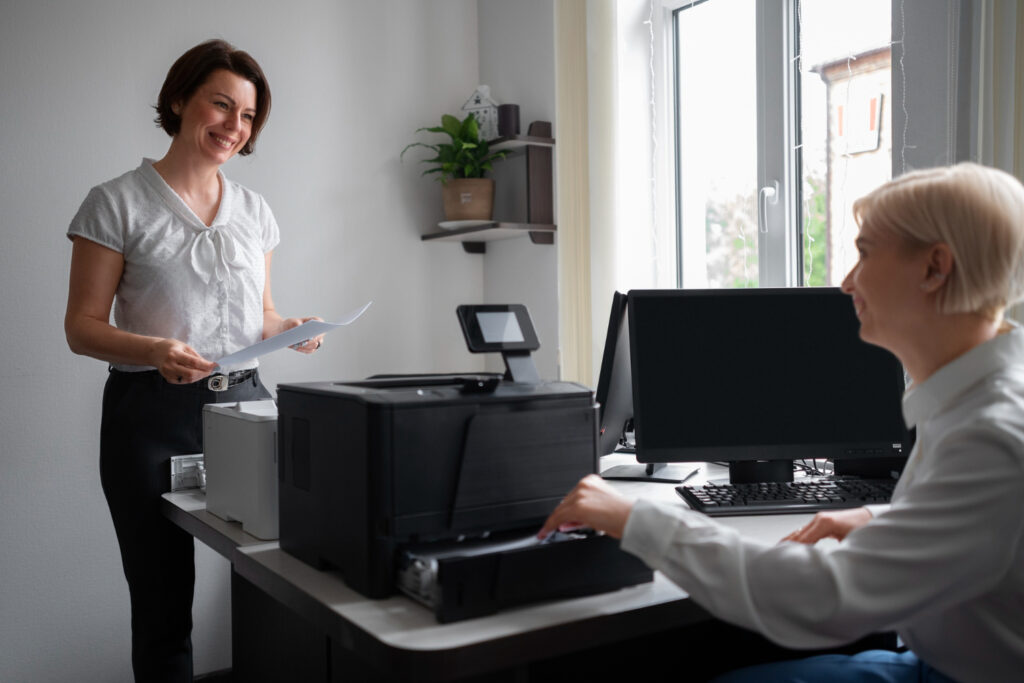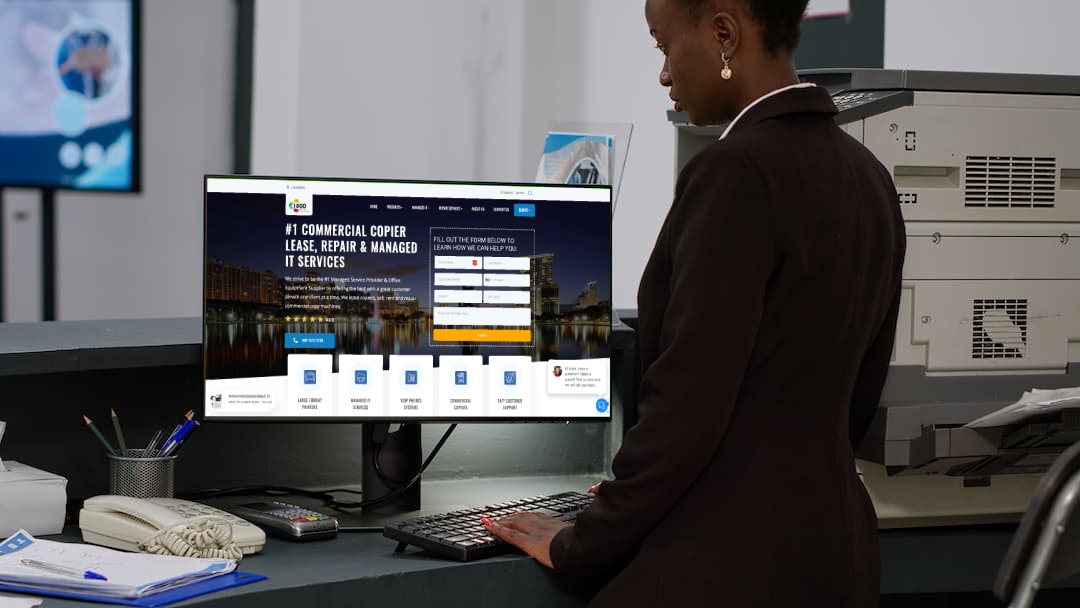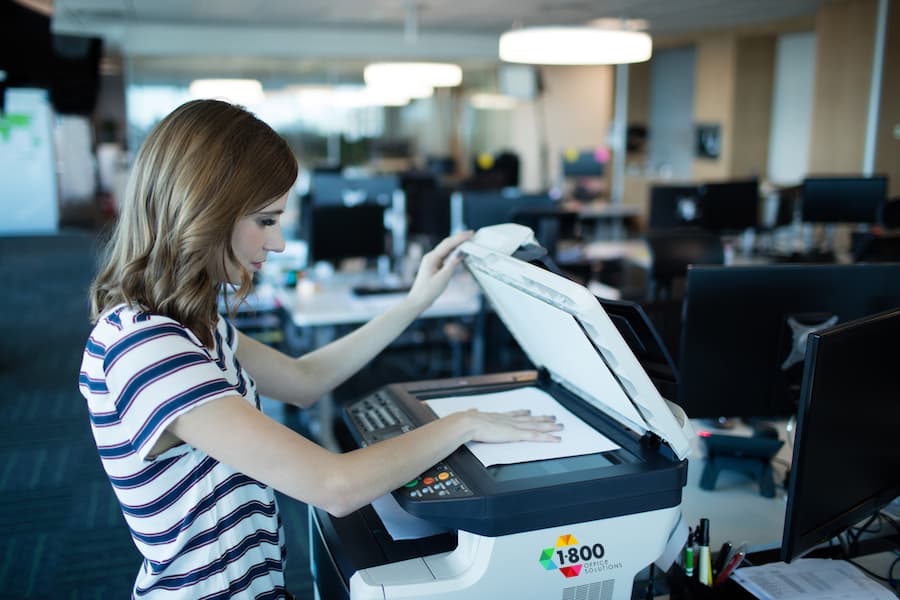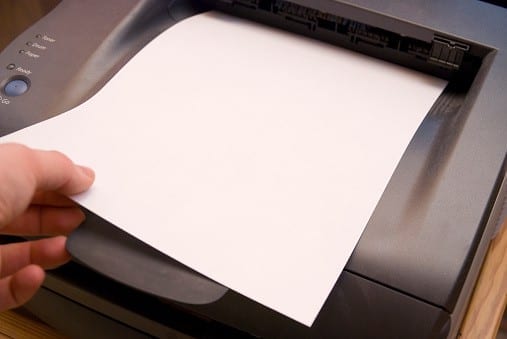Printer Security in the Modern Age: Protecting your data and documents
Introduction to the Modern Age of Printing
The evolution of printers has been a remarkable journey, reflecting the technological advancements of our time. From the early days of dot matrix printers to the modern era of network printers, the transformation has been significant. Printers are no longer just devices for producing hard copies; they have become multifunctional tools that play a vital role in daily business operations.
Evolution of Printers
The history of printers dates back to the invention of the printing press. Today’s printers are far more advanced, with capabilities such as scanning, copying, and even connecting to the internet. Wireless and network printers have become common in offices, allowing seamless integration with various devices and operating systems. The convenience of modern printers has made them indispensable in various industries, from healthcare to finance.
Importance of Printers in Daily Business
Printers are not just about printing documents anymore. They are part of a broader ecosystem that includes security features, firmware updates, and integration with the company’s network. They handle sensitive information, manage print jobs efficiently, and even offer encryption for secure print. The multi-functionality of modern printers has made them a crucial asset in enhancing productivity and ensuring smooth business operations. Learn more about HP’s advanced security features.
The Need for Security in Printing
With the growing complexity and capabilities of printers, the need for printer security has become paramount. The risks associated with unsecured printers are real and can lead to serious consequences.
Risks Associated with Unsecured Printers
An unsecured printer can be a gateway for hackers to gain access to a company’s network. Vulnerabilities in the printer’s firmware or the lack of a robust firewall can expose sensitive information. Default passwords that are not changed, disabled security features, and outdated operating systems can further increase the security risk. Even the hard drive within the printer can be a source of a breach if not properly protected.
Real-World Examples of Breaches
There have been instances where a lack of best practice in printer security led to significant breaches. In one case, a hacker exploited a vulnerability in a network printer to reroute payments from a firm. In another, malware was installed on a printer, providing unauthorized access to trade secrets over several months. These examples highlight the critical need to protect your printer with proper security measures, including encryption, regular firmware updates, and the use of strong passwords.
The modern age of printing has brought convenience and efficiency, but it has also introduced new challenges in security. Printer manufacturers are continuously working to enhance security features, but it’s also the responsibility of businesses to implement best practices in securing their devices.
From setting up a robust firewall to regularly updating the operating system, every step counts in ensuring that the printer does not become a source of a security breach. The stakes are high, and the protection of sensitive information must be a priority in today’s interconnected world.
Understanding the Risks
Physical Security of Printers
The physical security of printers is often overlooked but is a crucial aspect of printer security best practices. Ensuring that printers are placed in secure locations and implementing physical locks and access control can prevent unauthorized access.
- Location of Printers: Whether in an office or home setting, the location of printers plays a vital role in security. Printers are often placed in easily accessible areas, making them vulnerable to unauthorized access. By strategically placing printers in secure locations within the office, you can minimize the risk of physical tampering. This is especially important for multifunction printers that handle sensitive data.
- Physical Locks and Access Control: Implementing physical locks and access control mechanisms is a security best practice that can help protect your printers. Many printers come with lockable trays to secure stored print jobs. Access to the printer settings should be restricted to authorized personnel only, and a strong password should be set to prevent unauthorized access to the printer. Physical locks can also prevent theft or tampering with the printer’s hard drive, adding an extra layer of security.
Data Security
Data security is a critical aspect of network printer security. Ensuring the encryption of print jobs and secure storage of documents is essential to protect sensitive information.
- Encryption of Print Jobs: When a print job is sent from a computer to a printer connected to a network, the data must be encrypted to prevent interception. Using secure printing solutions that encrypt the data during transmission can prevent a data breach. Keeping the printer firmware up to date with new or improved security features is also vital to patch known security holes.
- Secure Storage of Documents: Many printers often store print jobs temporarily on their hard drive. Ensuring that this data is stored securely and is erased after printing is essential for data security. Implementing security measures like encryption and regularly checking your print settings can provide peace of mind that sensitive data is protected.
Network Security
Network security is a significant security concern, especially with the rise of wireless printing and the fact that printers are often connected to a network.
- Printers as Network Endpoints: Printers are now considered network devices and are as susceptible to security issues as any other device on the network. An unprotected printer connected to a network is like an open door for hackers, allowing potential security risks. Regularly updating the network settings and setting up a recurring reminder to check for security advisories can mitigate these risks.
- Vulnerabilities in Network Connections: Known vulnerabilities in network connections can allow unauthorized access to your network. Ensuring that your network router is secure and that the printer software is kept up to date can prevent sorts of nasty things like malware attacks. Changing the default password to a strong one and disabling unnecessary network access are essential steps in securing your printers.
Understanding the risks associated with physical security, data security, and network security is essential for implementing robust printer security measures. Whether it’s 30 million printers and multifunction devices in a large corporation or a single printer in a home office, the principles remain the same.
By adhering to security standards and being vigilant about potential vulnerabilities, businesses and individuals can ensure that their printers are secure and that their information remains protected.
Best Practices for Printer Security
Securing the Device
Securing the device is the first line of defense in printer security best practices. Implementing measures like authentication, disabling unnecessary physical ports, and ensuring proper data removal upon retirement can significantly enhance the security of your printers.
- Authentication and Authorization: Implementing strong authentication and authorization mechanisms is essential for network printer security. By requiring users to authenticate before they can access the printer, you ensure that only authorized individuals can use your printer. This can be done through the use of a strong password, biometric authentication, or smart cards. Regularly changing the default password to a strong one and keeping the printer firmware up to date can further enhance security.
- Disabling Physical Ports: Many printers come with various physical ports that might not be necessary for daily operations. These ports can be exploited as known security holes if left unprotected. Disabling unnecessary physical ports helps protect against unauthorized access and potential security threats. This is especially important in an office or home environment where the printer is connected to a network.
- Data Removal Upon Retirement: When a printer is retired or replaced, the data stored on its hard drive must be securely removed. This includes print jobs, network settings, and any sensitive data that might have been processed by the printer. Utilizing secure data removal techniques ensures that the information can’t compromise your network even after the printer is no longer in use.
Securing the Data
Data security is a critical aspect of printer security best practices. Ensuring the encryption of data both in transit and storage, user authentication for printing, and no storage of completed jobs can help protect sensitive information.
- Encryption in Transit and Storage: Encrypting data both in transit and storage is essential to prevent data breaches. When a print job is sent over the network, encryption ensures that it can’t be intercepted and read by unauthorized individuals. Many printers offer encryption features that can be enabled through the printer settings. Keeping the printer software up to date with new or improved security features is also vital.
- User Authentication for Printing: Requiring users to authenticate before printing adds an extra layer of security. This ensures that only authorized individuals can print from anywhere, preventing unauthorized access to your network. Implementing multifactor authentication, such as a password combined with a smart card, provides significant security against breaches.
- No Storage of Completed Jobs: Printers often store completed print jobs temporarily. Ensuring that these jobs are not stored permanently and are securely deleted after printing is essential for data security. Regularly checking your print settings and implementing secure printing solutions that automatically delete completed jobs can provide peace of mind.
Securing the Documents
Document security is often overlooked but is an essential part of network printer security best practices. Implementing measures like pull or push printing and special solutions for high-value documents like checks can ensure the integrity and confidentiality of printed materials.
- Pull or Push Printing: Pull printing allows users to send print jobs to a secure server, and then release the print job at the printer by authenticating themselves. Push printing, on the other hand, sends the print job directly to the printer but requires authentication before printing. Both methods help protect against unauthorized access to the printer and ensure that sensitive documents are not left unattended in the printer tray.
- Solutions for High-Value Documents Like Checks: High-value documents such as checks require special security measures. Utilizing secure printer features specifically designed for such documents, along with encryption and strong password protection, ensures that these documents are handled with the utmost security. Implementing security standards and using multifunction devices with the latest security advisories can further enhance protection.
Printer security is a multifaceted challenge that requires attention to the device, data, and documents. By understanding the potential vulnerabilities and implementing robust security measures, businesses and individuals can ensure that their printers are secure.
HP’s Advanced Security Features
HP, a leading name in the printer industry, offers advanced security features that set the standard for network printer security. These features are designed to help protect against known vulnerabilities and ensure that your printer can’t compromise your network.
- HP Sure Start: HP Sure Start is a unique technology that ensures the printer’s BIOS (Basic Input/Output System) is secure. If any inconsistency is detected in the BIOS, HP Sure Start automatically restores it to a safe state. This ensures that the printer’s firmware is up to date and free from any security issues that might allow unauthorized access to the printer.
- Whitelists and Run Time Intrusion Detection: HP’s whitelist feature checks the printer’s firmware during startup to make sure your printer is running authenticated code. Run Time Intrusion Detection, on the other hand, provides continuous monitoring to detect and stop attacks, then automatically reboots to repair any damage. These features work together to provide significant security against potential threats.
- HP Connection Inspector: This intelligent security feature evaluates outgoing network connections typically used by malware to detect and stop suspicious activity. If an issue is detected, the printer can be set to automatically trigger a reboot, helping to prevent data breaches and other security vulnerabilities.
Consultative Services and Tailored Solutions
In addition to advanced security features, HP offers consultative services and tailored solutions to meet the specific needs of different industries. These services provide a comprehensive approach to printer security best practices.
- Industry-Specific Solutions: Recognizing that different industries have unique security requirements, HP offers solutions tailored to various sectors. Whether it’s healthcare, finance, or education, HP’s industry-specific solutions take into account the unique security standards and regulations of each field. This ensures that the printers are configured with the right security settings and that sensitive data is handled appropriately.
- HP’s A3 MFPs: HP’s A3 multifunction printers (MFPs) come with a suite of advanced security features designed to secure your printers and data. From strong password protection to secure printing solutions, these devices offer a robust defense against known security holes. Regularly checking your print settings and keeping the printer software up to date with new or improved security features ensures that your office printer remains secure, whether in the office or home environment.
HP’s commitment to printer security is evident in its advanced features and tailored solutions. By understanding the unique needs of different industries and offering innovative technologies like HP Sure Start, whitelists, and HP Connection Inspector, HP provides a comprehensive approach to printer security.
These features, combined with regular maintenance and adherence to best practices, ensure that HP’s printers offer peace of mind and robust protection against potential security threats. Whether you’re securing a single printer or managing 30 million printers and multifunction devices, HP’s security solutions provide the tools and support needed to keep your printers safe.
What People Also Ask
What are the common risks associated with unsecured printers?
Unsecured printers pose several risks, including unauthorized access to the printer, data breaches, and potential access to your network. If the printer settings are not configured properly, sensitive data stored on the printer’s hard drive can be accessed remotely with a password. Outdated software and known vulnerabilities can be exploited by hackers to do sorts of nasty things like installing malware. Ensuring that the default password is changed to a strong one and that network access is controlled is essential to mitigate these risks.
How can encryption enhance printer security?
Encryption plays a vital role in enhancing printer security by protecting the data as it is transmitted over the network or stored on the printer. By encrypting print jobs, the sensitive information being sent to the printer is rendered unreadable to anyone who might intercept it. This helps protect against data breaches and unauthorized access to sensitive data. Additionally, many printers offer encryption features for data stored on the printer, providing an extra layer of security. Encryption is a key component of secure printer solutions and is essential for both office and home environments.
What are some industry-specific solutions for printer security?
Industry-specific solutions for printer security take into account the unique requirements and regulations of different sectors. For example, healthcare organizations must comply with strict privacy laws, requiring specific security measures to protect patient information. Financial institutions may need advanced encryption and multifunction devices to secure financial data. Manufacturers like HP offer tailored solutions that consider the specific security standards and known security holes of each industry. These solutions provide a comprehensive approach to printer security, ensuring that the printers are configured appropriately for the industry’s needs, and offer peace of mind that the printers are secure.
Conclusion
In the modern age, printer security is not just a technical concern but a business imperative. From understanding the risks associated with unsecured printers to implementing network printer security best practices, the journey towards securing printers is multifaceted. It involves physical security, data security, document security, and the utilization of advanced features like HP’s Sure Start and Connection Inspector. Regularly updating printer firmware, using strong passwords, and being vigilant about potential security threats are essential steps in ensuring that your printer can’t compromise your network.
The future of printer security lies in ongoing threat monitoring and the importance of security in emerging technologies. As printers become more connected to networks and offer wireless printing capabilities, the security landscape will continue to evolve. Ensuring that the firmware is up to date, implementing secure printing solutions, and adapting to new or improved security features will be vital. The integration of printers with emerging technologies like IoT will require a continuous focus on security standards and measures.












